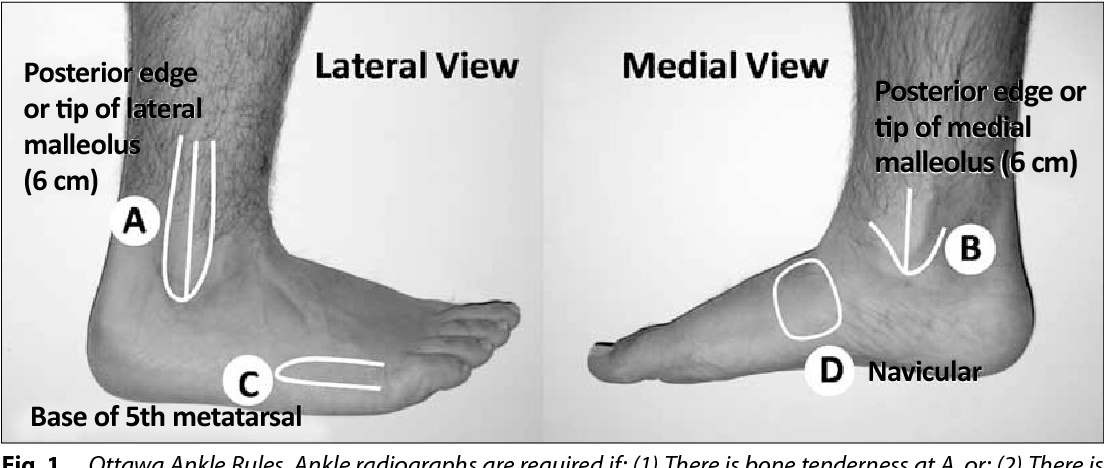Ankle sprains are a common occurrence in athletes as well as the general population. Traditionally, physicians would order radiographs for all ankle injuries, although less than 15% would have a clinically significant fracture, and add to healthcare costs.
The Ottawa Ankle Rules were established to help physicians decide which patients should have an x-ray following an acute ankle injury.
Evidence supports the Ottawa ankle rules as an accurate instrument for excluding fractures of the ankle and mid-foot. The instrument has a sensitivity of almost 100% and a modest specificity, and its use should reduce the number of unnecessary radiographs by 30-40%. Check as follow:
A. Bony tenderness along distal 6 cm of the posterior edge of fibula or tip of the lateral malleolus
B. Bony tenderness along distal 6 cm of the posterior edge of tibia/tip of the medial malleolus
C. Bony tenderness at the base of 5th metatarsal
D. Bony tenderness at the navicular
E. Inability to bear weight both immediately after injury and for 4 steps during the initial evaluation

Fig. 1. Ottawa Ankle Rules.
Our Approach
Dublin Sports Injury Clinic is a physical therapy clinic based in Pearse Street, Dublin 2. We have a holistic approach to our assessment and treatment. The initial assessment helps us to explore your risk factors and help you to get pain free shortly and stop any further injuries. We will design a customized training program for you to start with, and we will coach you and monitor your progress closely. We prescribe relative rest or modified activities as required. Depending on the individual requirement, we apply manual therapy accompanied by stretching to restore tissue elasticity and reduce the strain in the muscle-tendon unit with joint motion. How to start your recovery immediately after an ankle injury? (Read More).
Next step
Want to get in touch with our team of a therapist or you are looking for some advice? Simply fill in your details below & we get in touch with you shortly.
Disclaimer: This article is for information only and should not be used for the diagnosis or treatment of medical conditions. You can contact us if you would like to book an appointment or get some advice from our therapist.
Source: Brooks SC, Potter BT, Rainey JB. Inversion injuries of the ankle: clinical assessment and radiographic review. BMJ 1981; 282: 607-608
[/kc_column_text][/kc_column][/kc_row]